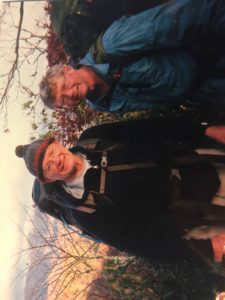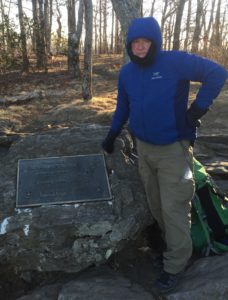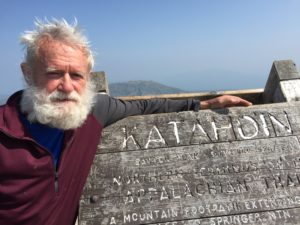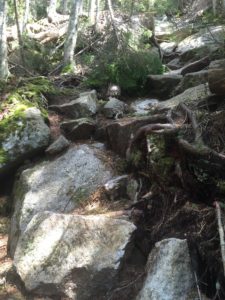The Long Trail runs the length of Vermont, 272 miles, and, as many Vermonters know, it has its own presidential range. It’s less lofty than the more famous one over in New Hampshire, but four peaks between Breadloaf Mountain and Lincoln Gap bear the names Mount Wilson, Mount Roosevelt, Mount Cleveland and Mount Grant.
And right in the middle, between Roosevelt and Cleveland, according to the Long Trail Guide, is a lesser summit, a summit that had no name.
Rob Waters, a retired newspaperman who used to be my editor at The News & Observer, wrote this story and, just this one time, I got to edit him.
+++
In the summer of 1970, Rob worked on a crew to improve the Long Trail, in the Green Mountain National Forest in Vermont. That four-man crew, three college students and a Navy veteran, went out on Monday mornings and returned late on Fridays, staying in trail shelters or camping during the week to be near their work.

The week they worked north of Breadloaf, they carried a bag of, Rob didn’t remember exactly, it might have been chocolate bars, that contained a hand puppet. The puppet, basically a plastic bag printed with a face and with hands sticking out, was named “Little Hans.” It said so right there on the package.

Rob said he and his friends played with Little Hans, waving him around and making dumb jokes.
As he and the others trekked between their camp and their work sites they repeatedly crossed the summit with no name. As the week progressed, a consensus emerged that the hump between Presidents Cleveland and Roosevelt was worthy so, one evening, Ray Secor, the Navy veteran, carved a small sign that said “Little Hans Peak.” Next day, the crew attached the sign to a tree on the summit.
Rob is a lifelong hiker – in recent years I’ve hiked with him several times on the A.T. — but he hadn’t been back to Vermont much and had never revisited that section of the Long Trail. So imagine his surprise as he leafed through the September 2016 issue of “Backpacker Magazine” and saw a reference to that peak. The article recommend a peak-bagging walk in the Green Mountains from Cooley Glen Shelter to Mount Wilson and back. That hike, the article said, would take you across the summits of Cleveland and Roosevelt and, in between, a place called “Little Hans Peak.”
The name had stuck.
NOTE: See for yourself. Google “Little Hans Peak,” go to Peakbagger.com and there it will be: Little Hans Peak, Vermont, elevation 3,348 feet. Peakbagger.Com calls it an “unofficially named peak.”
Coming Friday: The Real Navy


